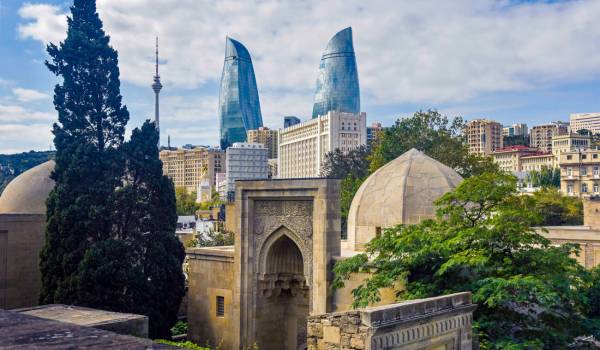
Baku
Gubadli, which has picturesque nature, is rich in history. Sources on the history, ethnography, and culture of Gubadli repeatedly emphasize that this district was one of the settlements of the ancient Turks: The monuments that existed in the region clearly confirm this fact.
The monuments scattered in the land of Gubadli tell about the distant past. The cave-temple in Gavur gorge IV, the monuments of Galali in Muradkhanli, Goy Gala in Aliguluushagi villages V, Javanshir tomb on Yazi plain, two tombs in Demirchiler XIV, the tomb in Gurjulu XVII, the tomb in Khojamsakhli village XVIII century. The cave-temple in Aliguluushagi village, the fortress in Khojamsali, Anabat in Seytas, and many legendary monuments (Boy-maiden rock, Broken bridge, etc.) are perhaps the chronicles of more ancient times.
There was a state forest fund of 13,160 hectares consisting of various types of trees in the region. In the Gubadli region, more than 10 large-diameter trees of rare species were protected as natural monuments. Located at an altitude of 1,600 meters above sea level and covering an area of 20,000 hectares, the Gubadli State Nature Reserve with its rich flora and fauna protected many endangered species of animals and birds.
Gubadli region, which territory is rich in material culture and religious monuments, historically known as Bargushad district, was occupied by the aggressor Armenia on August 31, 1993. Gubadli was liberated from the Armenian occupation on 25th October 2020.
Dozens of caves in the region confirm that these places were among the first human settlements: "9 in Ashagi Mollu and Hamzali, 5 Kaha (caves) in the village of Aliguluushagi, which are considered to be ancient human settlements, remained before the occupation. There were ancient settlements in Khanlig, Chaytumas, Yusifbeyli, Malikahmedli, Mazra, and other villages as well. The 4th-century cave in the area called "Gavur gorge" was also considered to be a place of refuge for ancient people. In the territory of Gubadli, there were fortresses with a historical past, which served as protection and guard. "Galali" in Muradkhanli, fortresses in Khojamsakhli were preserved until the occupation of the region.
The stone monuments in the territory of Gubadli did not consist only of caves and castles. There were also sacred places and tombs that became places of pilgrimage and represented the architecture of their time. The tombs built in different layers of history have always attracted attention with their beauty.
Among the attractions of Gubadli existed the famous "Haji Badal Bridge" of the XIX century, Lalazar Bridge built-in 1867 on the Bargushad River with oval bottom and a flat surface, the historical mosque in the village of Mamer of the XVIII century, unique among the octagonal tombs of Azerbaijan the “Georgian tomb”, Healing springs such as Saribulag, Pasha spring, Shirin spring, Mashhadi Allahverdi spring, Albanian monuments of VI and VII centuries, unique ram statues and ram tombstones as a symbol of Gubadli, castles like Goy Gala, Galali of V century.